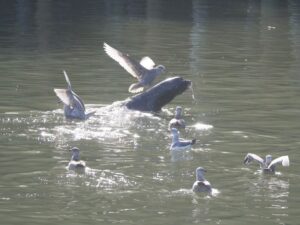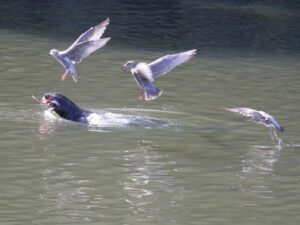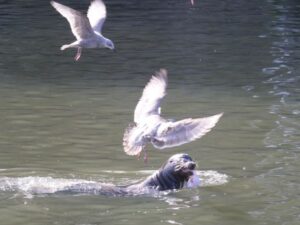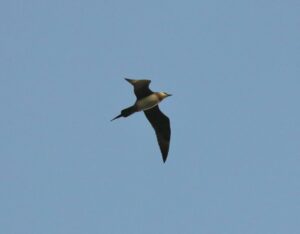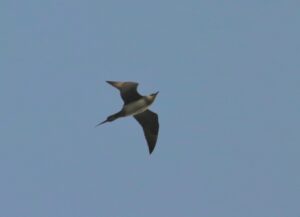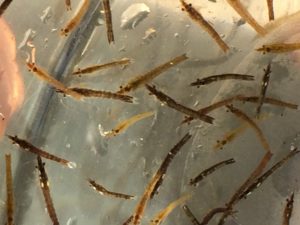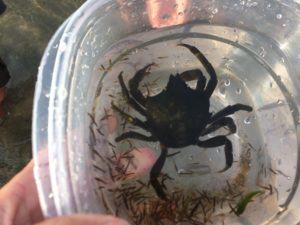Bill Mabie and Denise Mendoza were up at Noyo Harbor several weeks ago. Bill wrote, “We were having lunch at Sea Pal Cove and we saw something that surprised us. A Harbor Seal was swimming by, but then a Sea Lion showed up. At first we thought it was just playing, but then it disappeared for a short period and burst upwards breaching. Looking at the photos it appears that Sea Lion was attacking Gulls. Is that normal?”
No, something else was going on here. Bill’s photos show the Sea Lion caught some type of Skate, also called Rays. The Gulls were actually trying to steal all or part of the Sea Lion’s catch. Ryan Berger, a Marine Scientist at the Marine Mammal Center took a look at Bill’s photos. He wrote, “Most certainly you will see Gulls flying overhead when a CA Sea Lion has prey at the surface that they are breaking into smaller pieces to consume. The Gulls often fly down to pick up scraps or try and steal the fish away.”
I asked birder Tim Bray if he could identify the types of Gulls in Bill’s photos. He wrote, “All I can make out for sure is one immature Herring Gull with a yellow iris. I think there's at least one more immature Herring and one California Gull as well. Of more interest to me is the fish! It looks like a Skate, which I did not know we had in the Noyo. It makes sense though, they are often found in estuaries.”
Thanks to Bill for allowing me to share his photos with you here.
Clear and very cold this Saturday morning, with clouds coming in this afternoon. Rain is in our forecast, beginning sometime Sunday and continuing through next week. Bring it, Mother Nature! Let's break this drought!

